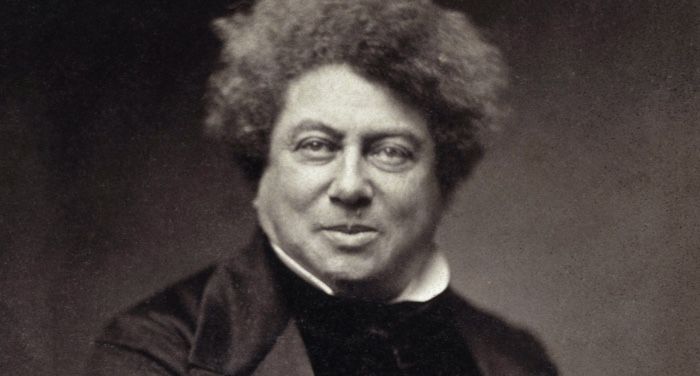
10 Things You Probably Didn’t Know About Alexandre Dumas
Alexandre Dumas is one of the best-known authors in history. But how much do you actually know about him? Here are some things I bet you didn’t know.
1. There Are Actually 3 Men Named Alexandre Dumas
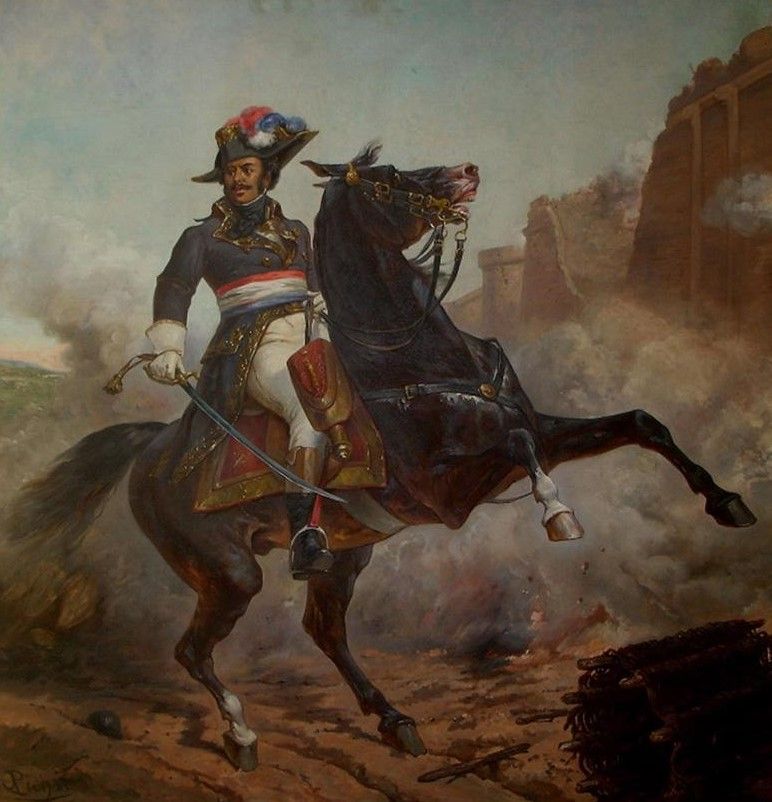
Thomas-Alexandre Dumas Davy de la Pailleterie
Thomas-Alexandre (1762–1806) was a General in the French Army during the Revolution. He was from Saint-Dominge (now Haiti and the Dominican Republic) and had a Black (enslaved) mother and white (nobleman) father, Alexandre Antoine Davy de la Pailleterie. He was the first person of color to achieve the rank of General in France, and tied for the highest-ranking officer of sub-Saharan African descent in the west ever until 1975. (Fun fact: in the video game Assassin’s Creed: Unity, he is mentioned by Bishop.) The Black Count by Tom Reiss is a biography of his life.
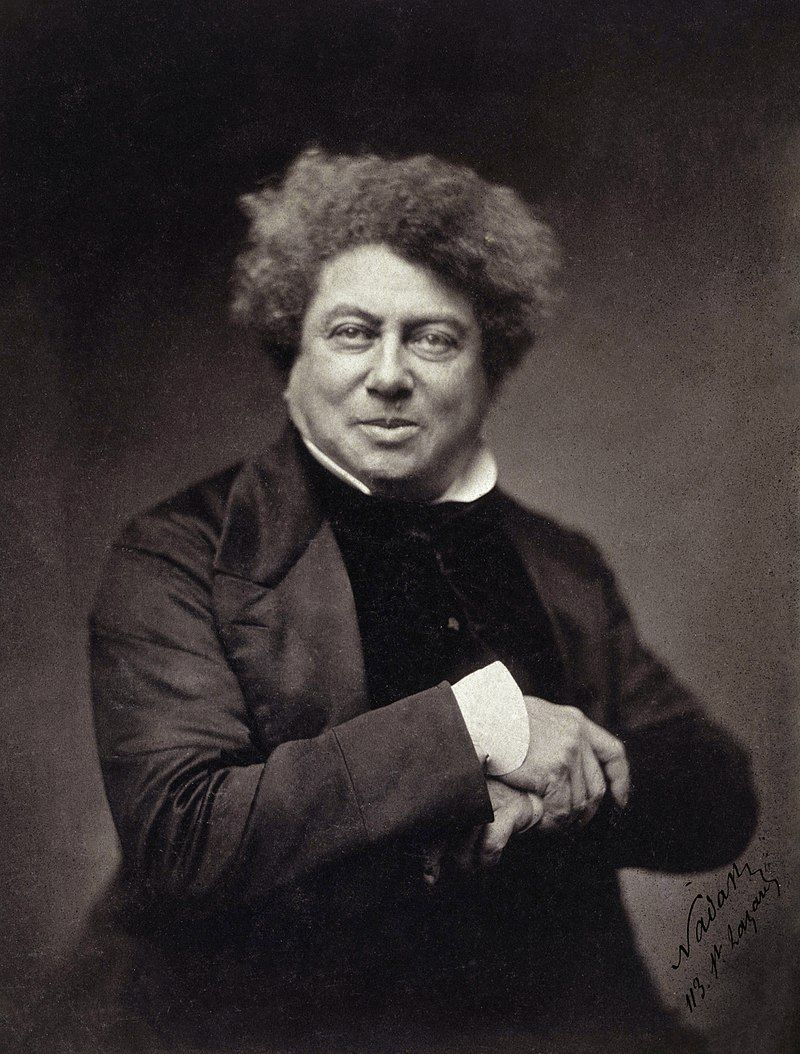
Dumas Davy de la Pailleterie, AKA Alexandre Dumas Père
Alexandre Dumas père (1802–1870) is the famous author of The Three Musketeers and The Count of Monte Cristo, among other works. He is the subject of this article.
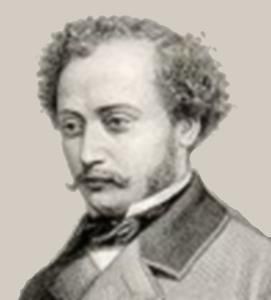
Alexandre Dumas Fils
Alexandre Dumas fils (1824–1895) is the son of Alexandre Dumas père and was also a novelist. (In French, père means father and fils means son.) He is known for La Dame aux Camélias (The Lady of the Camellias), which was adapted as the opera La Traviata by Guiseppe Verdi.
2. He Has A Google Doodle
On the anniversary of the original publication of the first installment of The Count of Monte Cristo, Google’s home page featured a lovely Doodle celebrating Dumas! The art and design are by Google Art Director Matt Cruickshank.
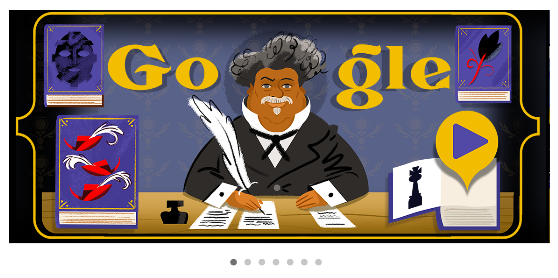
3. He Had Four Illegitimate Children (That We Know Of)
Dumas married actress Ida Ferrier in 1840 and they remained married until her death in 1849. He is believed by scholar Claude Schopp to have had about 40 mistresses, with whom he fathered four children. He acknowledged Alexandre Dumas fils at age seven and took over his education, separating him from his mother. The younger Dumas later wrote at length about his belief that fathering an illegitimate child obligated the father to marry the mother.
4. He Did Drugs With Victor Hugo (Really!)
Dumas was a member of the Club des Hashischins, a group that met regularly in Paris to smoke hash. I could not make this up. Club members included Dumas, Hugo, Charles Baudelaire, Gerard de Nerval, Eugene Delacroix, and Honore de Balzac. I. Could. Not. Make. This. Up.
5. He Wrote The Nutcracker (Sort Of)
The Nutcracker and the Mouse King was written by Prussian (German) author E.T.A. Hoffman in 1816. Dumas’s version was written in 1844 with a nearly identical plot, and it was his version that Pyotr Ilyich Tchaikovsky used in 1892 when composing the ballet suite, which is by far the most famous version. (The original choreography was by Marius Petipa and Lev Ivanov.)
6. A Train Station Was Named For Him

If you happen to take the Paris Metro Line 2, you might end up at a station named for Dumas, located under Boulevard de Charonne at its intersection with Rue de Charonne and Rue de Bagnolet, between the Philippe Auguste and Avron metro stations.
7. His Books Were Historical Fiction When He Wrote Them
The Count of Monte Cristo was published in 1844–46 and takes place between 1815 and 1839.
The Three Musketeers was published in 1844 and takes place between 1625 and 1628, during the rein of Louis XIII. Its sequels take place 20 and 30 years later (1648 and 1658).
He also wrote novels about Louis XIV and Louis XV; The Convert of St. Paul, a novel about ancient Greece and Rome; the Valois romances about the royal house of France from 1328 to 1589, as well as their successors; a book about Robin Hood called The Prince of Thieves; and many other historicals, as well as one vampire novel (The Pale Lady) and The Wolf Leader, considered one of the first werewolf novels.
8. His Works Have Been Adapted Over 200 Times
Although he’s nowhere near the level of Shakespeare or Austen, there have been a lot of adaptations of Dumas’s works, starting with his own stage adaptations. Here are the highlights of his two most famous works’ screen adaptations.
The Three Musketeers
Altogether, there have been over 50 film and television adaptations of The Three Musketeers, beginning with a 1903 silent and culminating (for now) in the 2014 BBC series The Musketeers. D’Artagnan has been played by actors ranging from Douglas Fairbanks and John Wayne to Gene Kelly and Michael York to Chris O’Donnell and Luke Pasqualino…and, of course, Barbie and Mr. Magoo.
The Count of Monte Cristo
This book was popular in radio plays, featuring Orson Welles more than once and Robert Montgomery another time. On screen, there have been dozens of TV adaptations including a 1977 Hong Kong serial that reimagines the setting as Southern China during the Republican Era and several telenovelas including a 1984 Venezuelan gender-flipped version, not to mention a TV movie starring Richard Chamberlain and a miniseries starring Gerard Depardieu. There have been at least as many versions on the big screen, starting in the silent era; the most well-known adaptation is the 2002 feature starring Guy Pierce and Jim Caviezel.
9. He Was Re-Interred on the Bicentennial of His Birth
Per his own wishes, Dumas was buried in his hometown of Villers-Cotterets after his death in 1870. In 2002, French President Jacques Chirac had his remains exhumed and brought to Paris, guarded by Republican Guards dressed as Musketeers. In a televised ceremony, they were interred in the mausoleum at the Panthéon. Chirac gave a speech acknowledging France’s racist past and Dumas’s place in the great French literary canon: the top.
10. His Final Novel Was Published in 2005
The unfinished manuscript for the third novel in his Sainte-Hermine trilogy was found and completed by Claude Schopp, who pieced together the mouse-eaten document and filled in the gaps with his extensive knowledge of Dumas’s writing. The Knight of Sainte-Hermine was published in English in 2008 as The Last Cavalier.
If you enjoyed these things you probably didn’t know about Alexandre Dumas, you might like to learn more about O. Henry, find out who Zora Neale Hurston was, get the low-down on Mary Shelley, learn more about Ernest Hemingway, or read my complete guide to Shirley Jackson.











